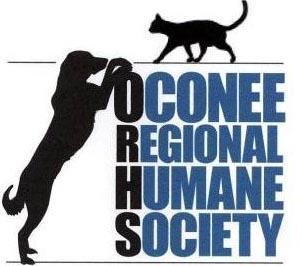Causes: Animals, Bird Sanctuaries, Environment, Natural Resources Conservation & Protection, Protection of Endangered Species, Water, Water Resources, Wetlands Conservation & Management
Mission: The International Crane Foundation (ICF) is dedicated to the study and preservation of cranes. Currently, 11 of the 15 crane species are endangered or threatened. The cranes, found on five continents, are adapted for life in wetlands and grasslands. Destruction and degradation of these ecosystems throughout the world has had devastating impact on cranes and other wildlife. ICF programs emphasize ecosystems conservation, by working with people at local and national levels to sustain short-term human needs while safeguarding long-term values of functioning ecosystems for wildlife and for people.
Programs: Icf headquarters center for conservation leadership - securing the future of cranes is dependent on conservation leadership at all levels, from using the charisma of cranes to inspire visitors to baraboo and the foundation's virtual worlds, to training key future leaders for international programs. The foundation's headquarters training center, staffed with experts in environmental education, field research, captive management, and conservation medicine, is supplemented by field opportunities with foundation programs in north america, africa, china, india, and southeast asia. Each year, we identify and train five to ten colleagues from crane regions around the world and twenty-five or more interns and volunteers. Intense, global networking efforts are focused on identifying, mentoring, and supporting crane conservationists and young scientists in key crane places around the world. The foundation communicates through diverse media about crane and habitat conservation efforts around the world to motivate people to conservation action.
east asia - east asia is home to five threatened crane species including the critically endangered siberian crane and endangered red crowned crane and supports the highest diversity of crane species (eight) of any region. Intense land and water development pressures due to rapid economic growth threaten wetlands of vital importance to crane survival in this region. This program builds on the strong cultural ties to cranes in east asia to engage people and policy makers in conservation of protected areas and their surrounding landscapes. The program also addresses the global impact china's development and resource use will have on crane areas around the world. Key conservation programs in east asia include securing cranes and their key wetlands in the amur/heilong river basin, sustaining viable wintering grounds for cranes in southeastern china, conserving black-necked cranes and their key wetlands in western china, national outreach in china, crane conservation in the korean dmz, and crane flyway conservation across east asia.
north america - the whooping crane is one of the rarest and most endangered bird species in north america. Whooping cranes face critical threats on their wintering grounds in and around aransas national wildlife refuge in texas, and along their long migratory flyway to their breeding grounds in wood buffalo, canada. Foundation programs focus on the conservation of the aransas-wood buffalo whooping crane flock, on establishing a separate flock of whooping cranes through reintroductions in the eastern united states, and on education and outreach to reduce threats to whooping cranes throughout their natural and reintroduced range. The foundation's north america program also includes long-term sandhill crane research aimed at developing cross-cutting strategies for crane management on agricultural landscapes, and captive crane population management and research.
sub-saharan africa and south and southeast asia: sub-saharan africa is home to six crane species, including four threatened resident species - endangered grey crowned cranes and vulnerable black crowned cranes, wattled cranes, and blue cranes. African cranes face many direct and indirect threats fueled by rapid population growth and extreme poverty in the region - grey crowned cranes are in serious decline due to capture for illegal trade and loss of vital wetlands, while wattled cranes are most threatened by large dams and water diversions. The foundation's conservation programs focus on the africa crane trade and global demand; restoring large floodplains for cranes, biodiversity, and ecosystem services; african cranes, wetlands, and community-based conservation; blue crane conservation on agricultural landscapes in south africa; african cranes, powerlines, and energy development; and monitoring and conservation planning. These efforts in africa have created global models for environmental flows and community-based wetland conservation. South and southeast asia - south and southeast asia is home to the threatened sarus crane, as well as wintering demoiselle, eurasian, and black-necked cranes. Strong cultural ties to cranes in india and vietnam provide unique opportunities to engage people in the conservation of these intensely settled landscapes using the sarus crane as a flagship species. The foundation has two key conservation programs in the region. For twenty-five years, the foundation has engaged in conservation of the mekong delta region, including a global model for community based wetland conservation at phu my. In india, the foundation is focused on sarus cranes and wetland biodiversity in the agricultural landscape of the upper ganges river basin.
Mission: The International Crane Foundation (ICF) is dedicated to the study and preservation of cranes. Currently, 11 of the 15 crane species are endangered or threatened. The cranes, found on five continents, are adapted for life in wetlands and grasslands. Destruction and degradation of these ecosystems throughout the world has had devastating impact on cranes and other wildlife. ICF programs emphasize ecosystems conservation, by working with people at local and national levels to sustain short-term human needs while safeguarding long-term values of functioning ecosystems for wildlife and for people.
Programs: Icf headquarters center for conservation leadership - securing the future of cranes is dependent on conservation leadership at all levels, from using the charisma of cranes to inspire visitors to baraboo and the foundation's virtual worlds, to training key future leaders for international programs. The foundation's headquarters training center, staffed with experts in environmental education, field research, captive management, and conservation medicine, is supplemented by field opportunities with foundation programs in north america, africa, china, india, and southeast asia. Each year, we identify and train five to ten colleagues from crane regions around the world and twenty-five or more interns and volunteers. Intense, global networking efforts are focused on identifying, mentoring, and supporting crane conservationists and young scientists in key crane places around the world. The foundation communicates through diverse media about crane and habitat conservation efforts around the world to motivate people to conservation action.
east asia - east asia is home to five threatened crane species including the critically endangered siberian crane and endangered red crowned crane and supports the highest diversity of crane species (eight) of any region. Intense land and water development pressures due to rapid economic growth threaten wetlands of vital importance to crane survival in this region. This program builds on the strong cultural ties to cranes in east asia to engage people and policy makers in conservation of protected areas and their surrounding landscapes. The program also addresses the global impact china's development and resource use will have on crane areas around the world. Key conservation programs in east asia include securing cranes and their key wetlands in the amur/heilong river basin, sustaining viable wintering grounds for cranes in southeastern china, conserving black-necked cranes and their key wetlands in western china, national outreach in china, crane conservation in the korean dmz, and crane flyway conservation across east asia.
north america - the whooping crane is one of the rarest and most endangered bird species in north america. Whooping cranes face critical threats on their wintering grounds in and around aransas national wildlife refuge in texas, and along their long migratory flyway to their breeding grounds in wood buffalo, canada. Foundation programs focus on the conservation of the aransas-wood buffalo whooping crane flock, on establishing a separate flock of whooping cranes through reintroductions in the eastern united states, and on education and outreach to reduce threats to whooping cranes throughout their natural and reintroduced range. The foundation's north america program also includes long-term sandhill crane research aimed at developing cross-cutting strategies for crane management on agricultural landscapes, and captive crane population management and research.
sub-saharan africa and south and southeast asia: sub-saharan africa is home to six crane species, including four threatened resident species - endangered grey crowned cranes and vulnerable black crowned cranes, wattled cranes, and blue cranes. African cranes face many direct and indirect threats fueled by rapid population growth and extreme poverty in the region - grey crowned cranes are in serious decline due to capture for illegal trade and loss of vital wetlands, while wattled cranes are most threatened by large dams and water diversions. The foundation's conservation programs focus on the africa crane trade and global demand; restoring large floodplains for cranes, biodiversity, and ecosystem services; african cranes, wetlands, and community-based conservation; blue crane conservation on agricultural landscapes in south africa; african cranes, powerlines, and energy development; and monitoring and conservation planning. These efforts in africa have created global models for environmental flows and community-based wetland conservation. South and southeast asia - south and southeast asia is home to the threatened sarus crane, as well as wintering demoiselle, eurasian, and black-necked cranes. Strong cultural ties to cranes in india and vietnam provide unique opportunities to engage people in the conservation of these intensely settled landscapes using the sarus crane as a flagship species. The foundation has two key conservation programs in the region. For twenty-five years, the foundation has engaged in conservation of the mekong delta region, including a global model for community based wetland conservation at phu my. In india, the foundation is focused on sarus cranes and wetland biodiversity in the agricultural landscape of the upper ganges river basin.
E 11376 Shady Ln Rd PO Box 447, Baraboo, WI 53913
608-356-9462

Animals
Baraboo













































